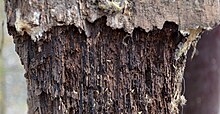Wood preservation
**History and Development of Wood Preservation:**
– Wood preservation dates back to ancient Greece and Rome.
– Significant developments occurred during the Industrial Revolution.
– Key inventors like Bethell, Boucherie, Burnett, and Kyan contributed techniques.
– Commercial pressure treatment started in the latter 19th century.
– Increased use in residential construction began in the 1970s.
**Hazards and Safety Concerns of Treated Wood:**
– Industrial pressure-treated wood poses limited risks if disposed of properly.
– Arsenic and chromium treatments for residential lumber ceased in 2003.
– Copper-based pesticides replaced CCA for most applications.
– Treated wood can pose hazards during combustion.
– Special approval is required for purchasing industrial wood preservation chemicals.
**Environmental Impact and Safety Measures:**
– Treated wood helps extend wood product lifespans, preserving natural resources.
– Past practices have led to environmental contamination in some areas.
– Current industry practices aim to minimize environmental impacts.
– Preservatives with copper particles are considered safe by manufacturers and the EPA.
– AWPA recommends providing Consumer Information Sheets with treated wood products.
**Chemical Classification and Technology:**
– Chemical preservatives are classified as water-borne, oil-borne, and LOSPs.
– Micronized copper technology suspends micro-sized copper particles in water.
– Systems like MCQ and MCA have been developed using particulate copper.
– Concerns exist regarding the safety of nano particles in micronized preservatives.
– EPA faced a petition in 2011 to revoke registration of micronized copper products.
**Copper Naphthenate:**
– Invented in Denmark in 1911.
– Used for various applications like fenceposts, utility poles, and wooden structures.
– Registered with the EPA as a non-restricted use pesticide.
– Application methods include brush, dip, or pressure treatment.
– Copper naphthenate is environmentally friendly, effective against decay and pests, and considered a safer alternative to toxic wood preservatives.
Wood easily degrades without sufficient preservation. Apart from structural wood preservation measures, there are a number of different chemical preservatives and processes (also known as timber treatment, lumber treatment or pressure treatment) that can extend the life of wood, timber, and their associated products, including engineered wood. These generally increase the durability and resistance from being destroyed by insects or fungi.


